Mistbelt grasslands sustain a rich diversity of life, especially when they form part of a complex mosaic that includes also forest, wetlands and rivers and streams.
A high percentage of grassland has already been lost to intensive agriculture and commercial monoculture plantations, and to other human activities and settlement that includes urban sprawl. What remains is under pressure and there are national and regional initiatives and recommendations to manage the various types of grasslands, including mistbelt grasslands.
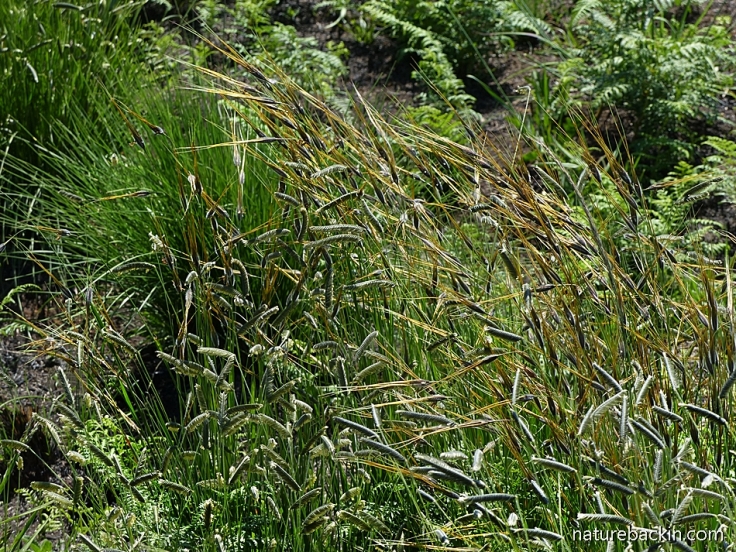
Grasslands support significant biodiversity, are essential to maintaining water resources sustainably and they conserve good quality soil. They provide forage for stock farming, sustain pollinators crucial to agriculture, and provide many natural resources, such as thatching materials and medicinal and food plants. They are also part of our social and cultural heritage and remain important for human recreational purposes including tourism.

Grasslands that have not been significantly transformed are incredibly diverse and are habitat for many creatures, including mammals and birds.
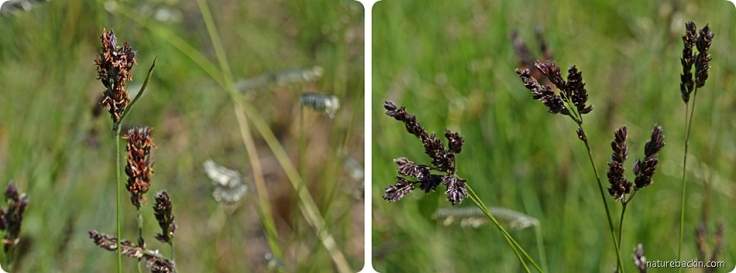

Grasslands comprise more than a variety of grasses – the vegetation is a rich mix of plants, including many flowering plants.
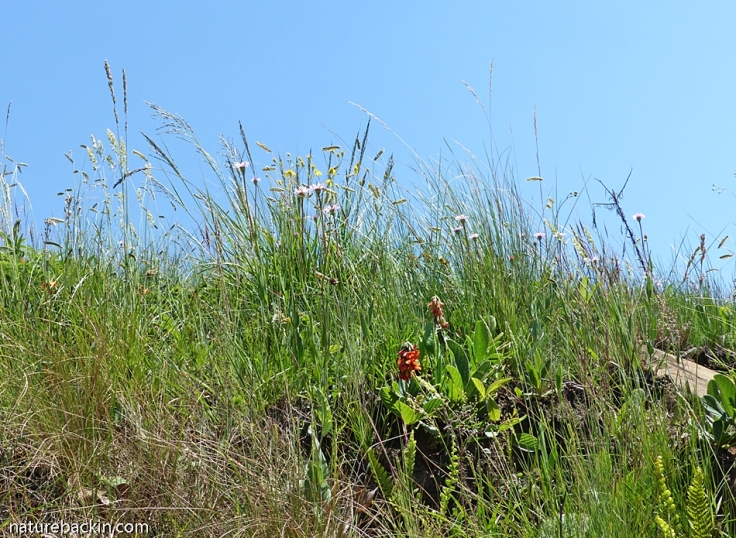
These photographs were all taken in November and December and showcase summer flowering grassland plants in the KwaZulu-Natal Midlands.
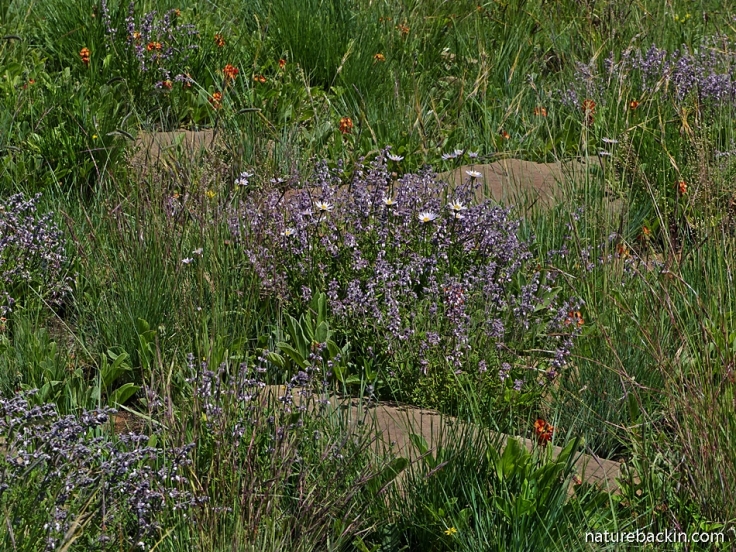

Above and below, Pelargonium luridum, showing some of the variety in its range of pink and creamy white flowers.
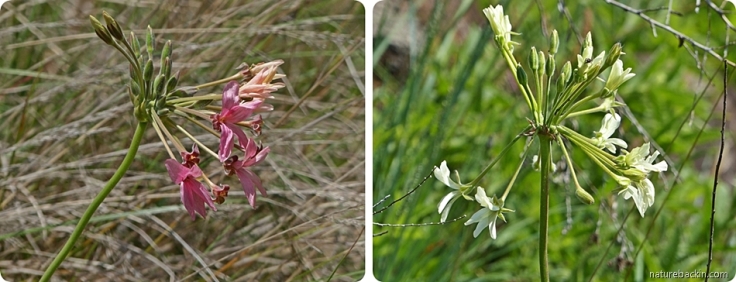
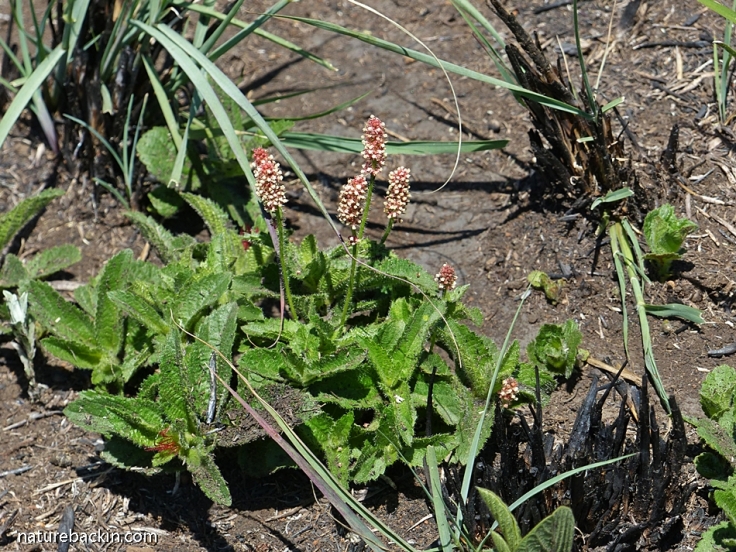
Most of these photos were taken in grassland in the Dargle Conservancy a few weeks after a fire. In the photo above the burnt stems of regenerating plants can still be seen. The plant with the spiky flowerheads is a species of Acalypha.
Mistbelt grasslands are characterised by long-lived plants that are adapted to fire. FIre management protocols for different types of grasslands have been established and these should be followed by land managers as burns that are too frequent, too hot, cover too extensive an area at one time, or are done at the wrong time of the season can be extremely detrimental.
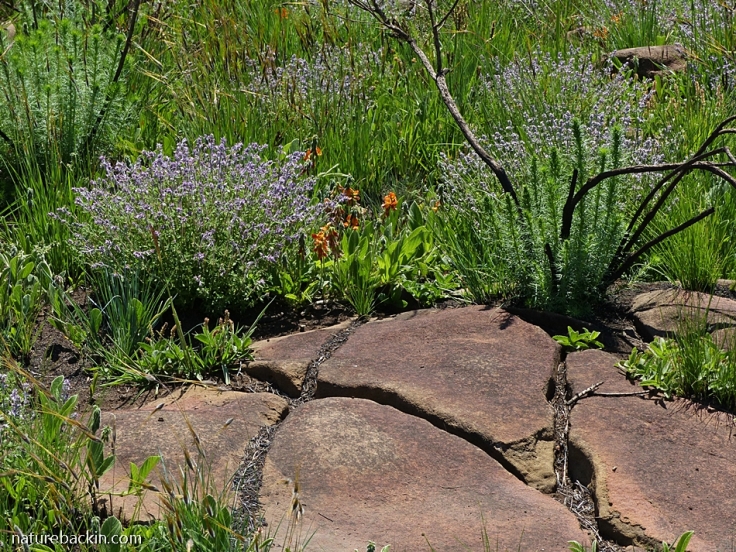

These lovely Pink Everlastings are a species of Helichrysum. There is a close-up below left, and to the right is a species of Ledebouria showing its spiky flowers and large leaves growing flat to the ground.
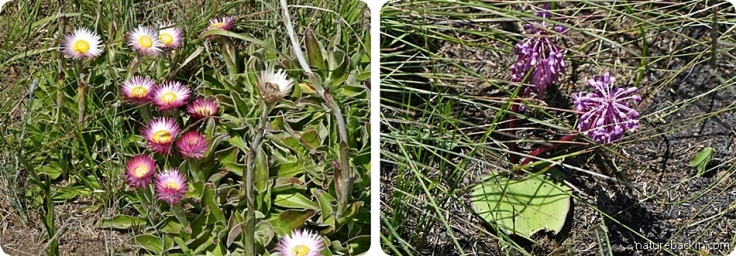
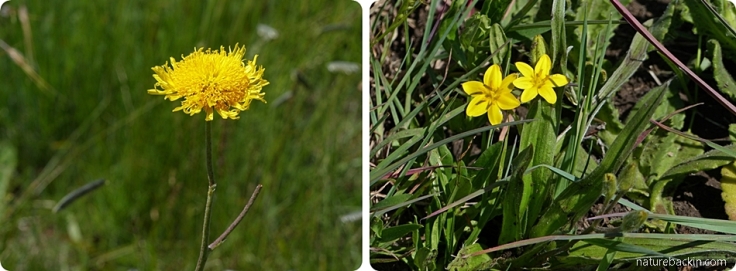
Lovely yellow flowers light up the landscape including the Berkheya species (above left), the Hypoxis (above right) and the Golden Everlasting, another species of Helichrysum, below. I am venturing to identify the genus of each of the plants I photographed, but in most cases deciding on the exact species is beyond my level of knowledge.
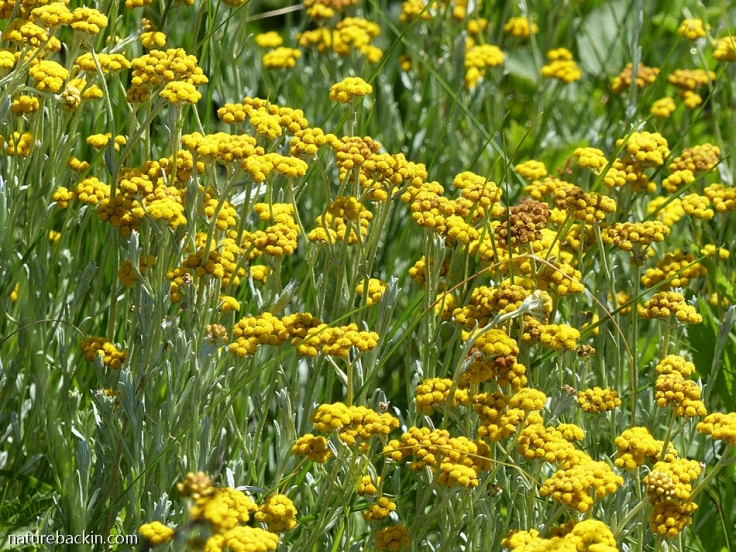
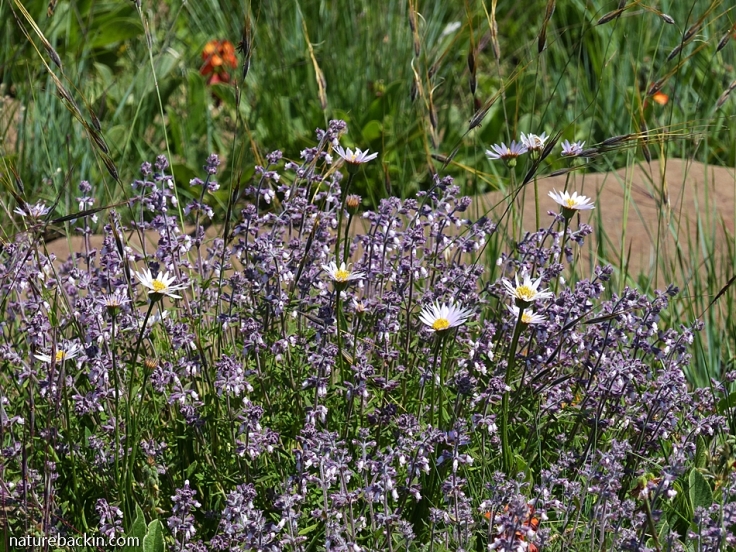
Flowering prolifically after the fire are stands of mauve and white herby looking plants called Pink Plume (Syncolostemon parviflorus ). Thanks to Barend Booysen of Crab Apple for identifying this plant for me – I could not even get to the genus.
Barend and his wife Helen are members of the Dargle Conservancy, which works actively to conserve the environment and biodiversity of the Dargle area. Barend leads monthly walks through the Kilgobbin Forest and associated grassland, and shares his knowledge and insights in a relaxed and engaging way. For more about Midlands Conservancy walks see here.
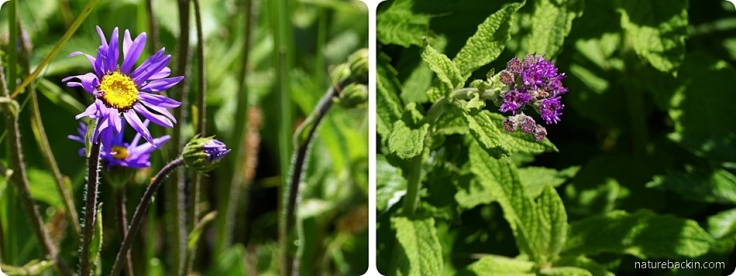
The lovely purple daisy is an Aster bakerianus (am taking a chance on this one) and the purple flower, above left, is one of the Veronia species. Below left is what I think is a Rotheca hirsute and on the right are the delicately blue upturned bells of one of the Wahlenbergia species.
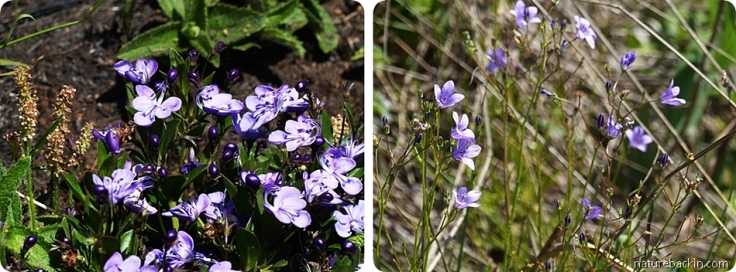

Remains of dry stone walls built on many of the Dargle farmlands by Italian prisoners of war during World War II can still be seen.

Above, the delicate stems and flowers of a Dierama, a member of the Iris family. They are also known as Harebells. Below left are the deep orange tones of the pea-like flowers of the Eriosema distinctum, and on the right, Pentanisia prunelloides.

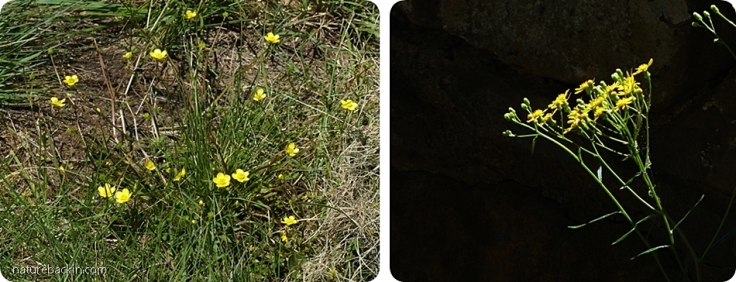
I photographed more yellow flowers in the form of one of our Buttercups, probably Renunculus multifidus (above left), and to the right, one of many Senecio species.
To see more on grassland flowers in this area visit the blog ‘Life Wonderings of a Nature Lover’: https://christeengrant.wordpress.com/
See also a post on grassland flowers in the spring on ‘Midlands Mosaic’: https://midlandsmosaic.wordpress.com/2017/11/15/spring-grassland-flowers/
The Dargle Conservancy posts each month a fascinating collection of wildlife sightings recorded by members: http://www.dargleconservancy.org.za/sightings.php
All of these sites helped me confirm some of my plant IDs for photos in this post.

Miraculously two lovely butterflies each paused long enough to be photographed. On the left is one of the Browns. Using a guidebook I studied the russet blush marks and the numbers and configurations of eye-spots on many similar species and decided it is likely to be a False Silver-bottom Brown or one of its variants (Pseudonympha magoides or Pseudonympha varii). On the right is a Painted Lady (Vanessa cardui).
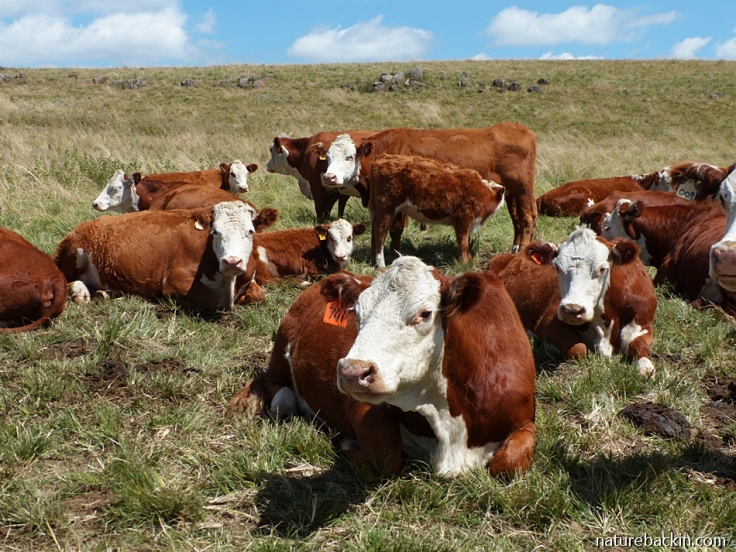
Much of the grasslands, including in the Mistbelt, have disappeared having been destroyed and replaced by timber plantations as well as by agriculture. Many grasslands that remain host grazing livestock, including cattle. Mistbelt grasslands are not well suited to heavy grazing. They can easily be pushed beyond their carrying capacity, and once damaged take a long time to recover and biodiversity is lost.

One misty morning, this cow managed to find one flowering plant against the fence of her paddock – a dandelion, which she seemed to relish.

More diverse, lovely and interesting than any cultivated garden, the primary mistbelt grasslands that remain need to be cherished and conserved.
Hats off to all the dedicated individuals and organisations, including the many KZN Conservancies, tirelessly working to preserve our natural environments.
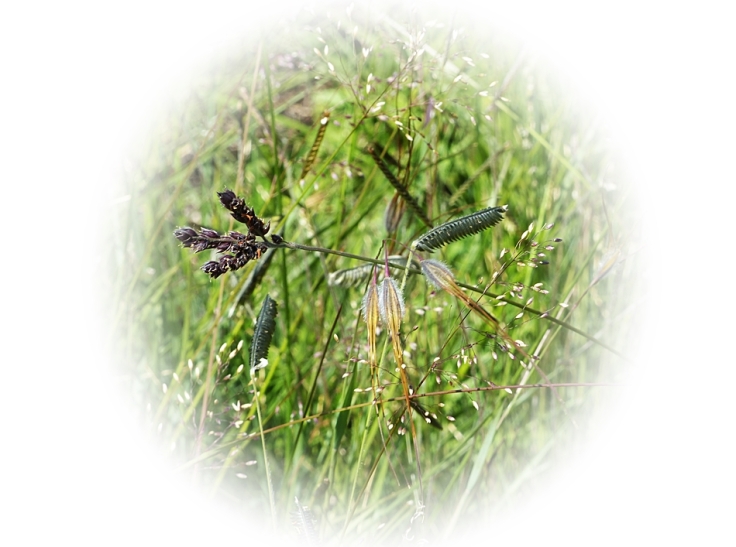 Sources:
Sources:
Pooley, Elsa. 1998. A Field Guide to Wild Flowers of KwaZulu-Natal and the Eastern Region. Durban: Natal Flora Publications Trust
SANBI. 2013. Grassland Ecosystem Guidelines: Landscape Interpretations for Planners and Managers. Compiled by Cadman, M., de Villiers, C., Lechmere-Oertel, R. & McCulloch, D. Pretoria: South African National Biodiversity Institute. http://biodiversityadvisor.sanbi.org/wp-content/uploads/2015/06/2013_Grassland-Ecosystem-Guidelines.pdf
Posted by Carol









December 17, 2018 at 7:01 am
Dear Carol your blog is stunning, so many of the flowers are out here as well. A special thank you for adding my link to your post, so very kind! Your photos and writing are always a joy to read! Heading off to the mountains…
LikeLiked by 1 person
December 17, 2018 at 2:42 pm
Hi Christeen – I am so pleased that you liked the post, especially as you are so knowledgeable about our grassland flowers.
Enjoy the mountains where it should be cooler, and I hope you are not exposed to any dramatic afternoon storms in this rather hectic weather! It was 40 degrees here today and forecast to be the same tomorrow.
LikeLike
December 24, 2018 at 3:28 am
Hi Carol,
It was a simply wonderful immersion in our mountain wilderness, yes, every day there was a storm, but we were safely sheltered and could enjoy the dramatic show!
xxx
LikeLiked by 1 person
December 27, 2018 at 6:34 am
How wonderful to experience the drama and majesty of mountain storms from a safe shelter.
LikeLiked by 1 person
December 15, 2018 at 6:50 am
The butterfly in the header took my breath away! Literally! What a great shot and such a pretty butterfly. We’re on the same page as far as treasuring and doing what we can to preserve grasslands. We’re hoping to get back up into our hills to see how regeneration is progressing since the latest fires. It’s amazing how the plants that are adapted to fire make their comeback. Thank you for this delightful look at your habitat.
And… I admire your endeavor to learn names. I seem to be hopeless at it. Perhaps the brain is just getting a wee bit tired. 😦
LikeLiked by 1 person
December 17, 2018 at 2:30 pm
Thanks. I was very taken with that butterfly too. I hope that plants have regenerated in your area after the fires. But even fire-adapted plants can be overwhelmed by fires that are too frequent or too hot or burnt at the wrong times, so we can’t be that complacent it seems. Re the plant names, I can’t say I am learning them – it is interesting to try to identify a plant in the moment, but unlikely I will remember what I found out later 🙂
LikeLike
December 14, 2018 at 9:49 am
Super article Carol and lots of memories for me of those exact places in your pictures. Thanks for all the links to my stories and Dargle and MCF. Much appreciated.
LikeLiked by 1 person
December 17, 2018 at 2:20 pm
Thanks Nikki. The Dargle forests and grasslands are very special and the conservancy is such a great initiative.
LikeLike
December 14, 2018 at 6:53 am
Them.. Sorry Carol, perhaps it is too early for me to write in English 🙄
LikeLiked by 1 person
December 14, 2018 at 7:00 am
I got your meaning and I really appreciate you writing in English. I have the barest smattering of German from an introductory language course I did years back. I know what you mean about too early and I am seriously considering another coffee ☕☺
LikeLike
December 14, 2018 at 3:42 pm
😊
LikeLike
December 14, 2018 at 6:51 am
Upps, too fast 😊
Especially these types of grasslands are very rich in different species. I am always happy when I can see her. Thanks for your detailed informations!
LikeLiked by 1 person
December 14, 2018 at 6:54 am
Thanks Simone. I happened to already see your fast reply! It is remarkable how species-rich the grasslands can be.
LikeLike
December 14, 2018 at 6:46 am
We have in Germany a big loss of grassland which is dry and Wetland
LikeLiked by 1 person
December 14, 2018 at 6:52 am
It is a sad loss the world over it seems. Perhaps the belated understanding of the importance of wetlands won’t be too little too late?
LikeLiked by 1 person
December 14, 2018 at 6:58 am
No, I don’t think so. Nature is very strong. But when the species are forever gone, then there is no chance.
LikeLiked by 1 person
December 14, 2018 at 7:02 am
Have to focus on the potential of good …
LikeLike
December 14, 2018 at 5:57 am
Lovely informative information and pics…We also have a conservancy area just outside Dundee Kzn – although sadly overgrazed in places. Many of the plants you photographed are flowering here too at the moment. The facebook group -‘ indigenous flowering plants of Southern Africa’ is great for posting pics and getting id’s from a great community of like minded people.
LikeLiked by 1 person
December 14, 2018 at 6:12 am
Thanks and good to know that Dundee also has a conservancy, though sorry to hear about the overgrazing in some places. Thank you for the info regarding the FB group. Perhaps I need to work on my wariness re FB!
LikeLiked by 1 person
December 14, 2018 at 1:06 am
Very interesting. Grasslands are under-appreciated. That top photo is gorgeous.
LikeLiked by 1 person
December 14, 2018 at 5:42 am
Thank you Graham. Yes I think they are under-appreciated and perhaps partly because relatively few of us have been lucky enough to see untransformed grassland and all its diversity?
LikeLiked by 1 person
December 13, 2018 at 9:47 pm
A beautiful mosaic of flowers, some of which look familiar to me. The grasslands deserve to be protected. There’s very little of this sort of thing around where I live as much of the land is given over to wheat, having been viciously cleared of its native bush generations ago.
LikeLiked by 1 person
December 14, 2018 at 5:36 am
Thanks Jane. I agree that the assault on the land was vicious. The lack of respect continues I think, although there are growing pockets of appreciation for indigenous habitats. I realise that agriculture is essential for food production but wish it could be less monolithic and destructive, and be more diverse and ecologically sensitive.
LikeLike
December 13, 2018 at 9:01 pm
I love grasslands and it is sad that so little is left of what was originally here. Your flower photos were wonderful to see and good job with the IDs!
LikeLiked by 1 person
December 14, 2018 at 5:18 am
Yes it is sad that so much grassland is gone. Glad you enjoyed our flowers and thanks, I found out quite a bit when trying to ID them including going off on interesting diversions!
LikeLiked by 1 person
December 13, 2018 at 7:03 pm
What a lovely variety of grasses and flowers. I too find flowers particularly difficult to identify accurately, despite the photographs in Field Guide to Wild Flowers of South Africa by John Manning – so many look similar to each other even though they looked clearly identifiable in the field!
LikeLiked by 1 person
December 14, 2018 at 5:13 am
Yes there are many very similar, plus many have significant variations in colour and even leaf size and shape to add to the complexity. Attempting to ID them I find helps make me more observant but I do tend to default to enjoying them nameless ☺
LikeLike
December 13, 2018 at 4:57 pm
I don’t know why I am surprised that many of these plant species look so – well – European. Perhaps because they seem to have a delicacy I associate with more temperate climates than yours. I’ll stop now, before I display my ignorance any further …. These scenes look as lovely as any in England in pre- Agribusiness days.
LikeLiked by 1 person
December 13, 2018 at 5:04 pm
I guess that thorntrees and aloes are considered to be iconic of Africa and so the less known more delicate-looking plants come as something of a surprise. It is sad that the English countryside is so transformed and so much is lost forever, and the same is true here, as in most places. But I am trying to be upbeat and celebrate what we can still find 🙂
LikeLiked by 1 person